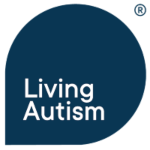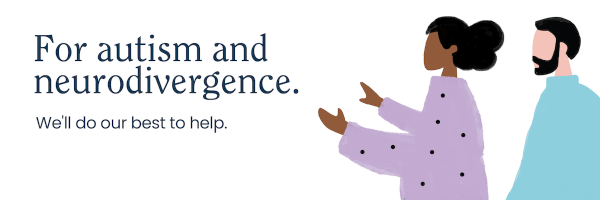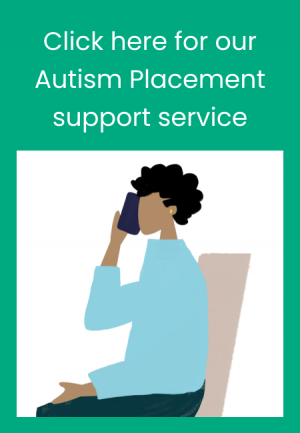The following article on Social Communication and Children on the Autism Spectrum has been written by the Speech and Language Therapist based at The Retreat, York.
The article offers a brief overview of social communication and provides some general strategies that may support the development of social communication skills, for children on the autism spectrum.

Communication
Communicating and socialising with others can often be challenging for children on the autism spectrum. There can also be a huge variability in the way autistic children communicate and interact with others.
While some children on the autism spectrum may have no spoken language and find initiating interactions very challenging, others may have strong verbal language skills.
Successful social communication is a complex process, supported by the foundations of language skills, social-cognitive skills (including understanding the perspective and knowledge of the listener) and executive function (the mental ability to plan, act and solve problems).
It is commonly accepted that difficulties, or differences with social communication and interaction, are a common feature for people on the autism spectrum and forms part of the diagnostic criteria outlined in the DSM-V (Diagnostic and Statistical Manual of Mental Disorders).
What is Social Communication?
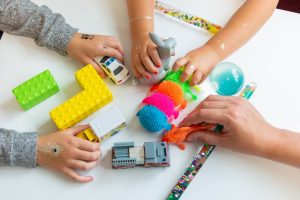
Social communication also termed pragmatics, describes the way we use language in social contexts and interactions with others. It involves the ability to share our thoughts and feelings with others and respond when others share their thoughts and feelings with us.
Social communication relies on an individual’s ability to use and understand a range of verbal (speaking and listening) and non-verbal communication skills (eye contact; body language; gestures; facial expressions; posture; use of space; tone of voice).
Features of social communication include:
The ability to use language and non-verbal skills in different situations. For example, when greeting, requesting, or commenting.
Adjusting language and how we use it for different listeners. Also known as prosody. Prosody can be described as the rhythm of speech and can include changes in pitch, volume, or the speed of spoken language. Prosody has an important function incommunicating additional information to accompany words being spoken. For example, a question may be indicated by the speaker if they use a rising tone of voice. Or an emotion may be conveyed by increasing the volume or changing the pitch of the voice. Children on the autism spectrum may speak with a voice that is monotone, or with a very high or low volume or pitch. They may also find it difficult to acknowledge or respond to prosody when it is used by others.
Understanding when to use formal and conversational language. For example, using different language when talking with a friend or a teacher.
Following the social rules of conversation. For example, turn-taking, staying on topic, asking relevant questions, storytelling, responding to verbal and non-verbal cues in conversation, or rephrasing language that is misunderstood.
Understanding and using non-literal language, such as jokes, idioms, and metaphors.
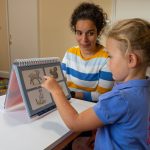
Supporting the development of social communication skills
Communication by its nature, is a two-way process. We can support children with social communication difficulties by not only teaching them how to learn social communication skills, but by adapting our own communication to acknowledge and respect their differences. For example, through allowing a child on the autism spectrum additional time to respond in a conversation, providing clear instructions and giving praise.
Tips to try at home
Turn-taking Games: choose activities that are developmentally appropriate for your child. Turn-taking games can be simple such as using building blocks or rolling a ball, or more complex, like board games. Turn-taking activities supports the development of understanding turn-taking in conversations and the concept of ‘waiting for a turn’. Using topics of interest, or activities and games that are motivating for your child, can be a useful way to encourage them to engage in social interactions.
Describing Tasks: for this activity, you could choose a book, or a piece of work your child has from school and use this to ask open-ended questions. For example: “What is the character doing?” or “What do you think they are feeling?”
Talking about emotions: for younger children, an activity could include recognising emotions, using emotion picture cards. This activity could be extended for older children, through asking them to identify and talk about a time when they have felt that emotion.
Modelling: model to your child social communication and conversation skills. For example, using gestures, beginning, and ending conversations, personal space and body language.
Role Play: role play scenarios with your child can help them to practice how they can respond in different social situations. For example, going shopping, or asking for help.
Social Stories TM : developed by Carol Gray in 1991, Social Stories TM provide a structured description of a social situation or event, explaining clearly what is going to happen. Information on how to create Social Stories TM can be found at: https://www.autism.org.uk/about/strategies/social-stories-comic-strips.aspx
Use a Comic Strip Conversation TM : also developed by Carol Gray in 1994, Comic Strip Conversations TM present conversations visually, using simple drawings. Comic strip conversations support children on the autism spectrum to draw and discuss a social situation they find challenging. For example, asking someone to play with them. Drawing the conversation allows a child to explore different things people may say, or think in a conversation. Guidance on producing a comic strip conversation can be found at: https://www.autism.org.uk/about/strategies/social-stories-comic-strips.aspx
Guessing Game: for younger children you could choose to draw an animal, or for an older child you might choose an image of a famous person. Model taking turns and asking open-ended questions, to try and guess the picture or drawing.
Prompt Cards: older children may find conversation prompt cards useful, which they can quickly access to support and structure interactions in different settings. Having a set of scripted responses written on cards may reduce anxiety and support a child when they are struggling to think of a response in a social situation.
It is important to encourage and support your child to practice the social communication skills they are learning with different people and in different environments.
Discussions with your child’s school, can also support the generalisation of the social communication skills they are practising. Teaching staff can support and develop with your child any strategies they are using, such as prompt cards or social stories.
Structured Approaches
Speech and Language Therapists are specialists in social communication and can offer assessment and interventions. Goals for intervention should be planned jointly with children and tailored to their individual needs. There are a range of structured intervention programmes and approaches, that have been developed to support the teaching of social communication and interaction skills to children on the autism spectrum. A Speech and Language Therapist may recommend a combination of approaches, to find the best support to meet the individual needs of the child.
Approaches such as the Talkabout programmes, developed by Alex Kelly and the Social Thinking programme, created by Michelle Garcia Winner, provide advice and guidance for parents and professionals. There are group interventions designed for parents, such as the Hanen – More Than Words programme and group interventions to support children and young people on the autism spectrum. For example, Lego Therapy and SocialEyes – developed by the National Autistic Society.
Research into the effectiveness of social communication interventions is growing. Available evidence suggests that social communication intervention programmes can be beneficial for children on the autism spectrum. However, a common limitation discussed, is the ability of children to generalise social communication skills they are learning in the therapy setting, to different environments and with different people.
Accessing support at the ideal frequency and time can be challenging for families and may vary across different locations and trusts. Families can contact their local NHS speech and language therapy services, or private therapy practices, for advice and guidance.
Summary
Social communication is a complex process, involving verbal and non-verbal communication skills and an understanding of the rules of social interaction. Social communication is recognised as challenging for all children on the autism spectrum. Strategies and interventions, to support the development of social communication skills can be effective. Collaborative working between families, therapists, and teaching staff, can support a child to generalise skills being learnt across environments.
Editor’s Note
You might also be interested to read the following articles –
Autism Social Skills: How to enhance social interaction
Assistive Communication Devices for Children with Autism
_______________________________________________________________________________________
